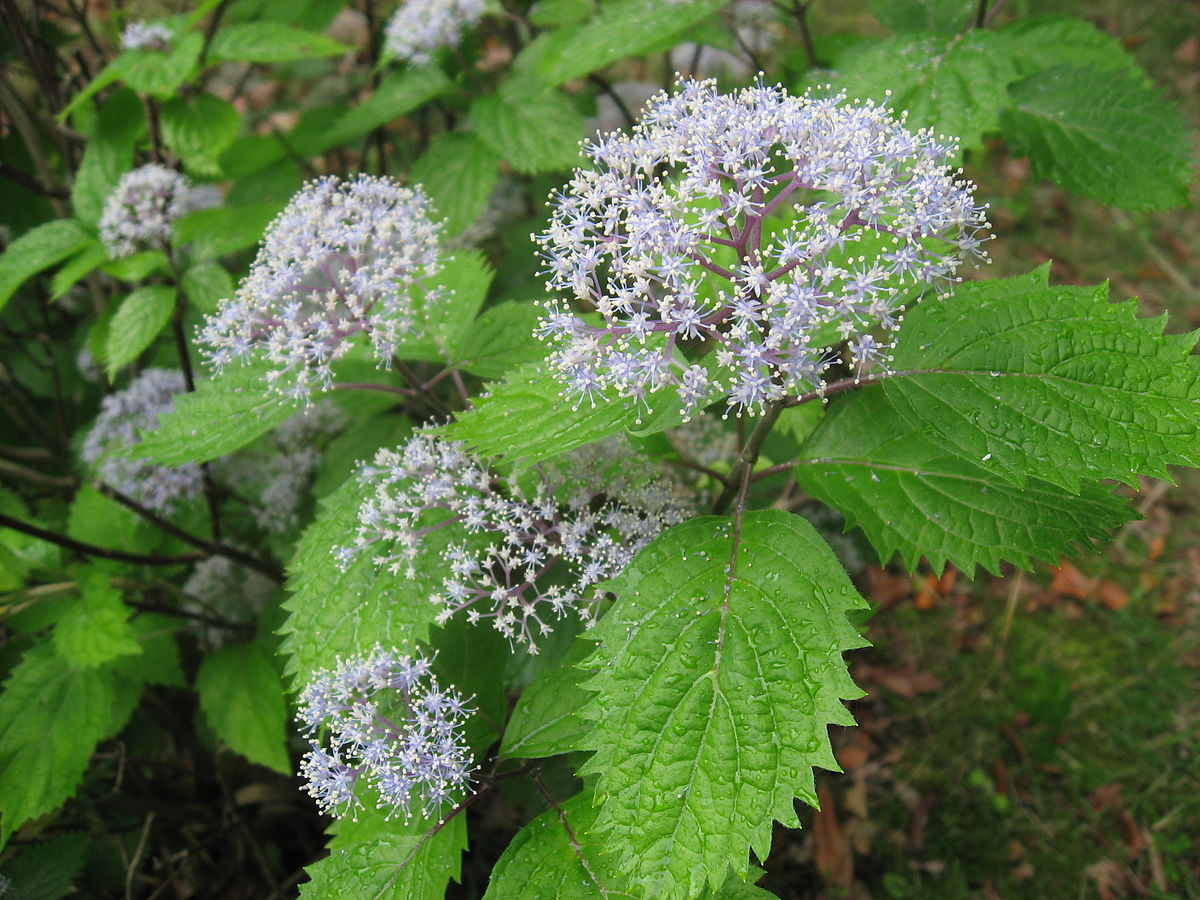Hairy hydrangea
(Hydrangea hirta)

Description
Hydrangea hirta, commonly known as the hairy hydrangea, is a species of deciduous shrub belonging to the Hydrangeaceae family. This plant is native to Japan, where it is found growing in the understory of forests, near streams and in mountainous areas. In this article, we will take a closer look at the characteristics, growth habits, and cultivation requirements of Hydrangea hirta. Taxonomy and Nomenclature The scientific name of the plant, Hydrangea hirta, is derived from the Greek words "Hydro" meaning water, and "angeion" meaning vessel, referring to the shape of the fruit. The specific epithet "hirta" means hairy, in reference to the hairy stems and leaves of the plant. Description Hydrangea hirta is a deciduous shrub that can grow up to 2-3 meters in height and width. The leaves are oval-shaped, 5-10 cm long, and have a rough texture. The upper surface of the leaves is dark green and the underside is covered in fine hairs. The stems of the plant are also covered in fine hairs, which give the plant its common name of "hairy hydrangea". The flowers of Hydrangea hirta are small and white, clustered in corymbs, and appear in mid to late summer. The fruit is a dry capsule, containing numerous small seeds. Distribution and Habitat Hydrangea hirta is native to Japan and is primarily found growing in the understory of forests, near streams, and in mountainous areas. It is also cultivated as an ornamental plant in gardens and parks in many countries. While it is not considered an invasive species, it has been introduced to parts of North America, including the eastern United States, where it is grown as an ornamental plant. However, it is not known to be widely naturalized in these regions. Cultivation Hydrangea hirta is a hardy plant that can tolerate a wide range of soil conditions, but it prefers moist, well-drained soil. It can grow in partial shade or full sun, but it prefers partial shade in hotter climates. It is recommended to mulch around the plant to retain moisture and to protect the roots from extreme temperatures. Pruning should be done in late winter or early spring, before the new growth begins. Hydrangea hirta can be propagated from softwood cuttings in the spring or semi-hardwood cuttings in the summer. It can also be propagated from seed, which should be sown in the fall or early spring. In terms of care, Hydrangea hirta benefits from regular watering during dry periods, especially during its first year of growth. Fertilizing with a balanced fertilizer in the spring and summer can also help promote healthy growth and flowering. Deadheading spent flowers can also encourage more blooms throughout the season. Overall, Hydrangea hirta is a relatively low-maintenance plant that can thrive in a variety of growing conditions. Propagation Hydrangea hirta can be propagated through several methods, including softwood cuttings, semi-hardwood cuttings, and seed. Softwood cuttings are taken in the spring when the stems are still young and flexible. Cuttings should be about 5-10 cm long and include at least two nodes. Remove the lower leaves and dip the end of the cutting in rooting hormone. Place the cutting in a pot filled with a well-draining soil mix and keep it in a warm, humid place. After a few weeks, the cutting should begin to form roots. Semi-hardwood cuttings are taken in the summer when the stems have started to harden. The process for taking and rooting these cuttings is similar to that of softwood cuttings. Hydrangea hirta can also be propagated from seed. The seeds should be sown in the fall or early spring in a pot filled with a well-draining soil mix. Cover the seeds with a thin layer of soil and keep the pot in a cool, dark place until the seeds germinate. Once the seedlings have grown to a sufficient size, they can be transplanted to their permanent location. Overall, propagation of Hydrangea hirta can be done relatively easily using softwood or semi-hardwood cuttings, or from seed. Uses Hydrangea hirta is primarily grown as an ornamental plant in gardens and parks. Its compact size and attractive foliage make it an excellent choice for borders, rock gardens, and containers. Its delicate flowers also make it a popular choice for cut flower arrangements. In traditional Japanese medicine, the plant has been used to treat fever, inflammation, and pain. Hydrangea hirta is an attractive and easy-to-grow plant that is a great addition to any garden. With its compact size, attractive foliage, and delicate flowers, it is sure to be a popular choice for many years to come. Conservation Status The conservation status of Hydrangea hirta is currently listed as "Least Concern" by the International Union for Conservation of Nature (IUCN). This is due to the species' relatively wide distribution and the lack of any major threats to its survival. However, like many plant species, Hydrangea hirta may be vulnerable to habitat loss and degradation, as well as overcollection for horticultural purposes. It is important to monitor the populations of this species and take measures to conserve its natural habitat to ensure its long-term survival.
Taxonomic tree:







